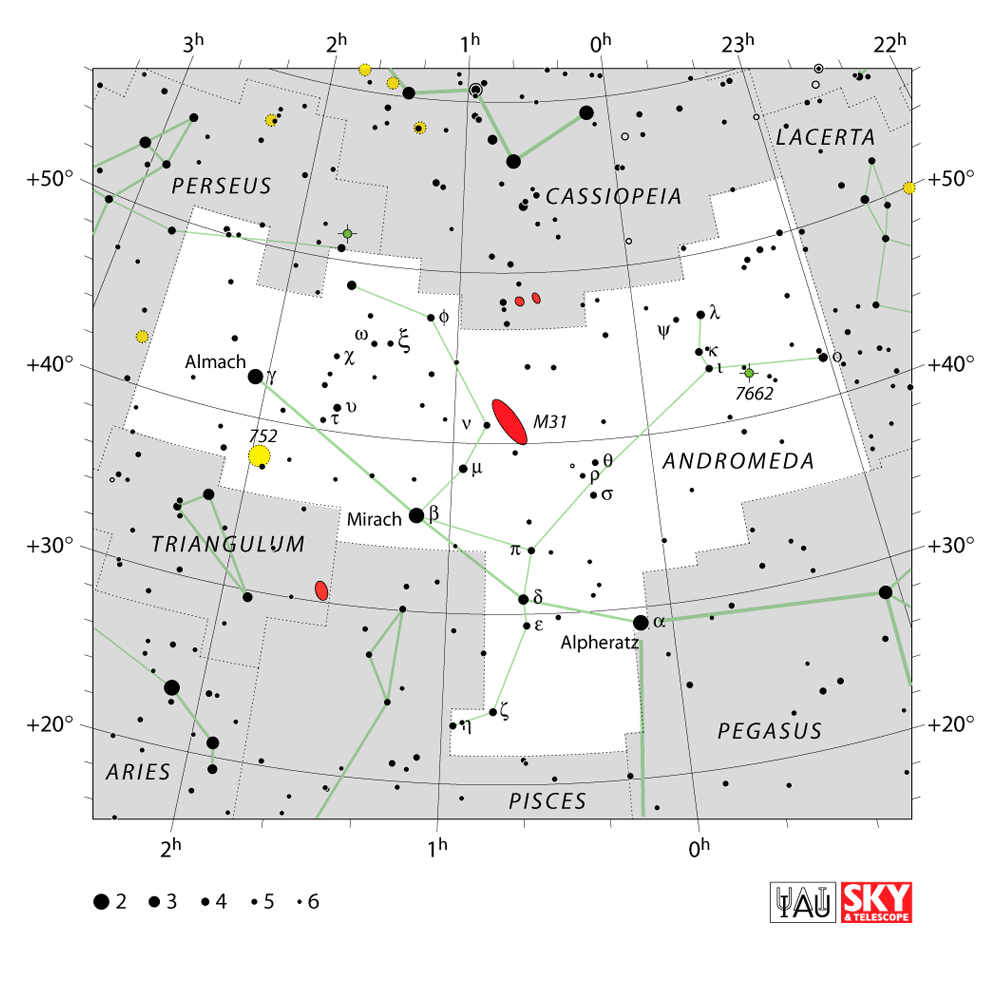The Andromeda Galaxy
The Andromeda Galaxy (M31) is a large spiral galaxy located about 2.5 million light-years away. The Andromeda Galaxy is observable for most of the year, located in the constellation Andromeda. Just next to M31 is another galaxy labeled M101. With its massive size and brightness, it is one of the few galaxies that can be seen by the naked eye.
I first started my astrophotography hobby by imaging Andromeda using my traditional photography camera. Through long exposures, you can bring out faint details of its spiral arms, and star colors in the area.
Specifications:
Designation: M31, NGC224
Known As: Andromeda Galaxy
Apparent Size: 3° x 1°
Magnitude (lower is brighter): 3.4
Distance from Earth: 2.5 M LY
Latest Iteration With Two Years Experience
The image above was taken in a Bortle 7 sky using my astro camera and a refractor telescope. As I collect more time on the target, the noise will be reduced and more detail will be revealed.
EQUIPMENT
Telescope: Apertura 60EDR
Mount: Skywatcher EQ6R-Pro
Camera: ZWO ASI533MC Pro
Guiding: ZWO ASI120MM Mini
Brain: ZWO ASIair Pro
Filters: SVBony UV/IR Cut
ACQUISITION
Integration Time: 1 hour
RGB: 12 x 300sec
BIN: 1×1
Gain: 110
Temperature: -10° C
Bortle Scale: 6
CALIBRATION
Darks: 10
Flats: 20
Offset/Bias: 30
The Andromeda Constellation
Andromeda (Chained Woman) is named after the Greek princess of Ethiopia who was save by Perseus from the sea monster Cetus.
Its most notable feature is the great Andromeda Galaxy, one of the nearest galaxies to Earth and one of the few galaxies visible to the unaided eye.

First Astro Photo Ever
This was the very first photo I took of a deep sky object. It was taken with my photo camera and 200mm lens on top of a static tripod. Due to having no experience with nighttime imaging, I didn’t know the amount of time needed to capture these faint targets. This image is an example of only 3-minutes of integration time.
![[image] First image of the Andromeda galaxy taken in 2020.](https://adamsaari.com/wp-content/uploads/2022/10/Andromeda-first-2020.jpg)
![[image] Second image of the Andromeda galaxy taken in 2020.](https://adamsaari.com/wp-content/uploads/2022/10/Andromeda-second-2020.jpg)
Second Attempt a Few Months Later
The second attempt was about a month after the first, with a little more practice and research. It again was taken with my photo camera and 200mm lens on top of a static tripod. This image has about 6-minutes of integration time.
Third Attempt a Year Later
After a year of experience under my belt, I decided to revisit Andromeda. This was taken with the same photo camera and 200mm lens on top of a new portable motorized mount (Skywatcher Star Adventurer).This image has 25-minutes of integration time. These progression of photos really shows how more time really affects the quality of the image.(Having a motorized mount definitely helped too.)

Available Merchandise
Use the Order Form to request prints or merchandise. (I accept Venmo or CashApp.)
*General information regarding constellations, galaxies, nebulae, and planets have been sourced from: AstroBackyard, VisibleDark, Wikipedia, EarthSky, and NASA.

![[image] high quality image of the Andromeda galaxy.](https://adamsaari.com/wp-content/uploads/2022/10/Andromeda-2022-1200px.jpg)